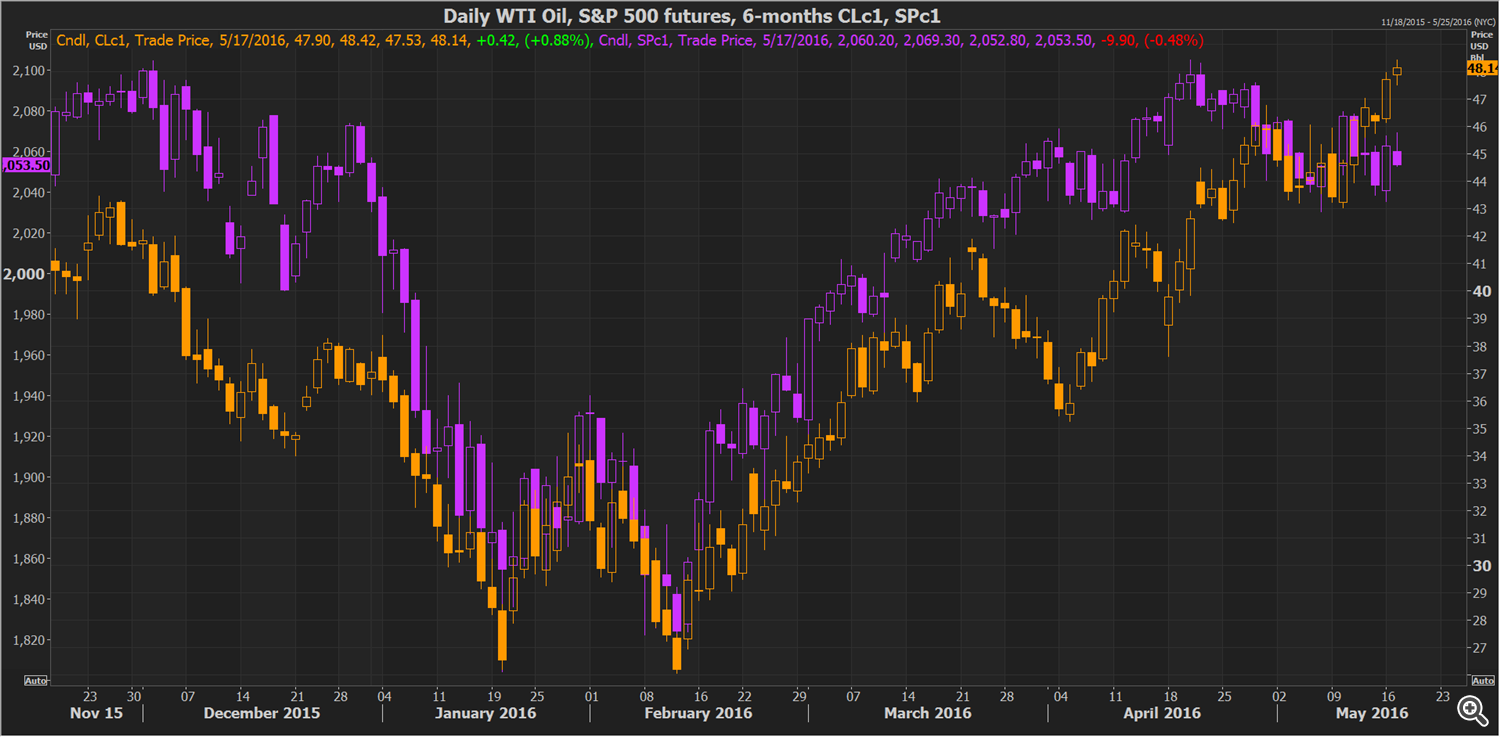Crude Oil Rally Boosts Risk Assets, Commodity Currencies
It has been a remarkable year for crude oil and market participants that specialize in this particular market. Having bottomed at just below $28 a barrel in January (a near 13-year low), a mere 4 months later the price has rallied by more than 70% from that low. Interestingly, the US equity benchmark the S&P 500 also made a low on the day that oil bottomed, although that particular level was also retested in early February for US equities. This is a demonstration of how oil has been an important theme for risk assets this year, as well as commodity currencies and particularly of countries that are major oil producers. Energy companies also have a substantial weight in a number of equity indices; directly impacting their performance while the credit woes of leveraged energy companies was also a major focus in Q1.
According to most pundits, oil is now looking to test the $50 a barrel level and the big question of course is whether the rally has further to run. The speculative community seems to have turned bullish on oil, helped by the positive short-term technical picture, some major supply disruptions recently and the bear-turned-to-bull transformations of major investment houses such as Goldman Sachs. Looking at the technicals, the crossing of the 50-day moving average above the 200-day average signals the establishment of an uptrend, while the Ichimoku cloud also paints a positive picture on the daily timeframe.
In terms of supply disruptions, the Canadian wildfires that are raging out of control and hampering that country’s supply as well as problems for Nigeria as some of the country’s pipelines were attacked, have helped the oil price make some short-term gains. On a more medium-term horizon, the reduction in supply by non-OPEC members, such as the shale oil industry in the United States, is also helping to support prices.
One useful lesson of the latest leg of the rally is that producer meetings such as the one in which OPEC and Russia met recently in Qatar, count for little. The acrimonious breakup of that particular meeting did not have much effect on the rally, despite warnings that top producers needed to reach an agreement to limit production before the oil price had any chance of recovery. It is a fair assessment that Saudi and Russian production are still at very high levels, while other ‘less lucky’ producers with higher costs have needed to cut back. The prime example of this is the US shale oil sector. The millions of barrels of Iranian oil that has come back to the market after the lifting of sanctions did not have the expected effect of flooding the market and sinking oil to $20.
It is very easy of course in retrospect to blame the oil analysts for ‘getting it wrong’. The sustainability of this rally however will probably depend on whether $45-50 a barrel is now a price that shale oil producers can live with and at which they can produce. Although there have been some statements that 40-45 is the floor that such producers are looking for (as they have managed to cut costs and become more lean), it remains to be seen what exactly will happen. The US weekly rig count in particular may give important clues as to future direction.
Therefore, it will be interesting to check whether this time the new consensus call will hold. Specifically, that oil price gains will be capped by production that will come back on line; the natural response to a higher price. This may only happen with a lag as restarting production in a lot of cases involves much more than turning a tap back on. The oil market therefore is still in a state of flux given the huge moves that have taken place and it is still searching for a new equilibrium range. An example of such a range was $80-$110 of 2012-2014 which of course led to overinvestment in production and the present price collapse. It also looks like the oil market, with all its volatility, will remain a key driver for risk assets and petrocurrencies for the remainder of the year.




